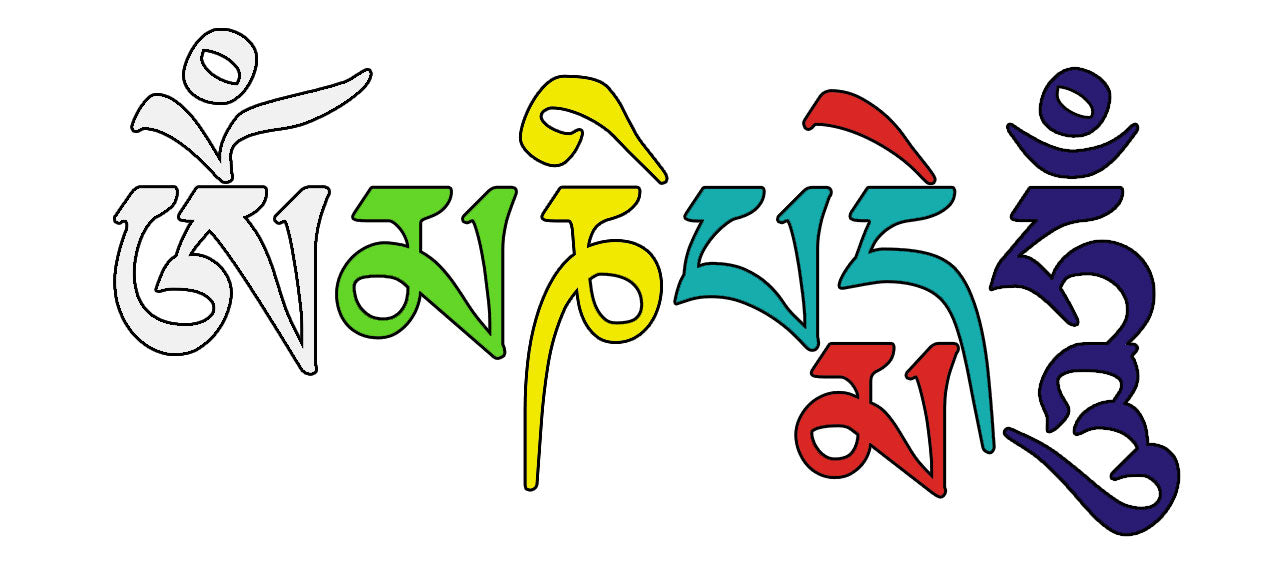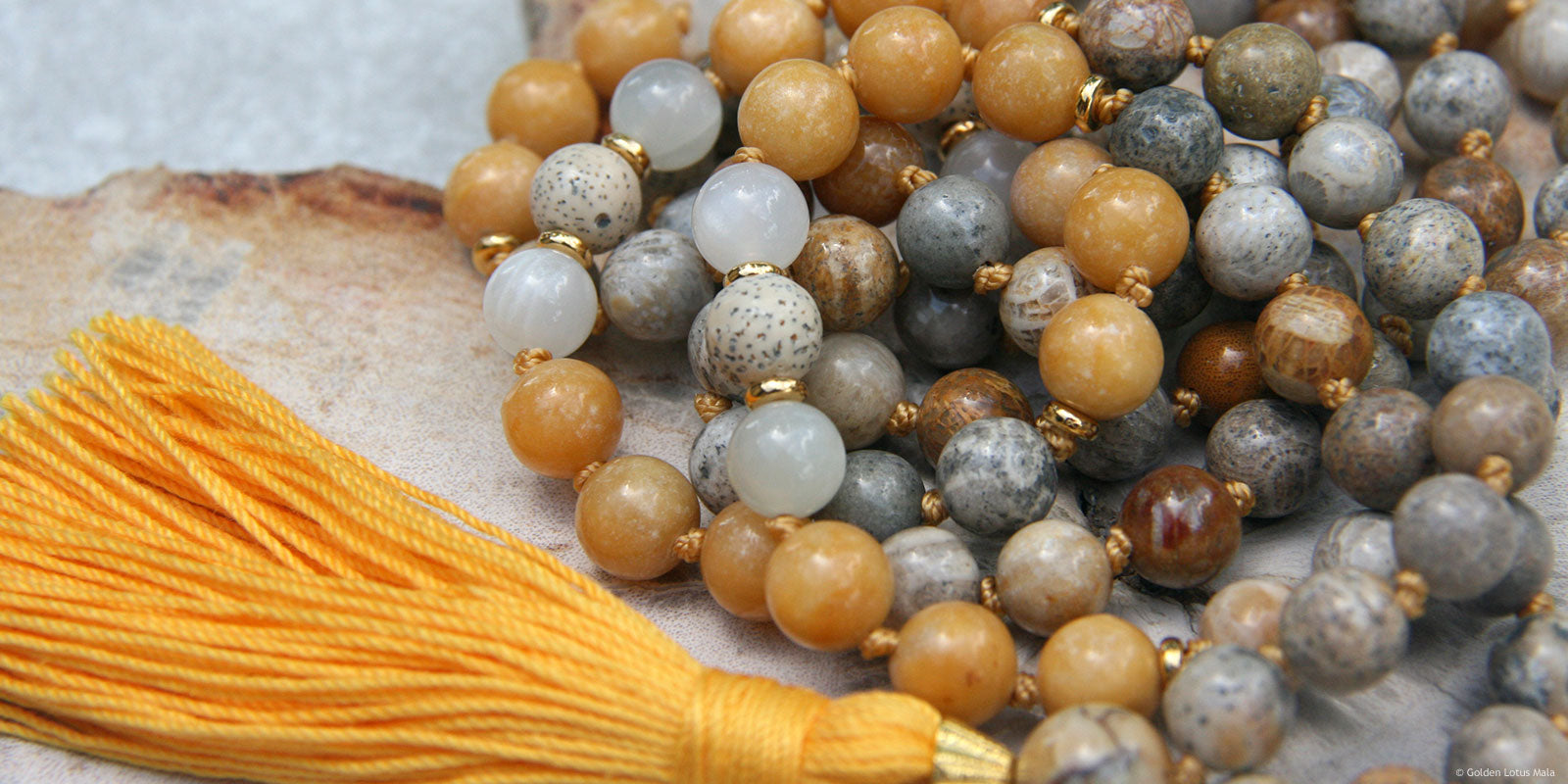Om Mani Padme Hum Mantra
4 min read

Reciting a mantra during meditation can help you focus, calm and transform your mind. Mantra recitation is an aspect of Buddhist and Hindu spirituality, but you can use this type of recitation for mental and physical relaxation as well. It is known to relax the body, calm the mind, and develop compassion.
Om Mani Padme Hum Meaning

One of the most famous Tibetan Buddhist mantras is ‘OM MANI PADME HUM’. Known simply as the MANI, it is the mantra of the supremely compassionate Avalokiteśvara, the Tibetan Buddhist embodiment of compassion. What does it mean?
“When you say the first syllable Om it is blessed to help you achieve perfection in the practice of generosity, Ma helps perfect the practice of pure ethics, and Ni helps achieve perfection in the practice of tolerance and patience. Pä, the fourth syllable, helps to achieve perfection of perseverance, Me helps achieve perfection in the practice of concentration, and the final sixth syllable Hum helps achieve perfection in the practice of wisdom. So in this way recitation of the mantra helps achieve perfection in the six practices from generosity to wisdom.”
—Dilgo Khyentse Rinpoche, Heart Treasure of the Enlightened Ones
Let's break down the mantra and explore the meaning of each component in more detail:
Om (or Aum)
Om is a sacred and universal mantra in many Indian spiritual traditions. It represents the primordial sound from which the universe originated and encompassed all sounds, words, and vibrations. Chanting or meditating on "Om" is believed to align oneself with the divine and connect to the ultimate reality.
Mani
Mani translates to "jewel" and symbolizes compassion. It is associated with the quality of love and empathy towards all beings. The jewel is considered precious, representing the inner potential for enlightenment and realizing one's true nature.
Padme
Padme means "lotus" and symbolizes wisdom. The lotus is a significant symbol in Buddhism, as it grows in muddy water but remains unstained and blooms beautifully. Similarly, insight enables one to navigate life's challenges while maintaining clarity and purity of mind.
Hum
Hum is a syllable representing indivisibility or the union of method and wisdom. Method refers to compassionate actions and the intention to benefit others, while wisdom refers to understanding reality's true nature. Hum signifies the integration of these two aspects, emphasizing the harmony between compassion and wisdom on the path to enlightenment.
How Many Times To Recite Mani Mantra
One popular way of employing the MANI is to think compassionately towards all beings in the universe by slowly repeating the mantra at least 21 and preferably 108 times. Include human beings, animals, fish, birds, and insects. Remember to include yourself as an object of your compassion.
Mantra recitation is often practiced using a mala, a string of beads used for meditation and prayer. In Tibet, mantras are considered very powerful. In addition to being recited, sacred words or mantras are printed onto prayer flags. The mantras or prayers are carried on the wind and in turn, bless the environment and its beings.
The number of repetitions can be adjusted according to individual preferences and the guidance of one's teacher or specific meditation practice. The mantra can be recited as a daily practice, during meditation sessions, or in other spiritual activities, allowing practitioners to connect with its profound meaning and invoke the qualities it represents.

How To Recite Om Mani Padme Hum Mantra
In meditation, the repetition or visualization of the mantra can lead to a state of concentration and mindfulness, helping to calm the mind and cultivate inner peace.
- Sit cross-legged on a cushion in a quiet, private space, where you won’t disturb anyone.
- Breathe deeply for a minute so to clear your mind. Then begin reciting the mantra OM MANI PADME HUM slowly in a low quiet voice. When thoughts intervene return to focusing on the mantra.
- After a few minutes continue to say the mantra and begin visualizing your words reaching all living beings and relieving them of their suffering. Be sure to include yourself.
- Do this for 108 recitations or one round on a mala beads necklace.
- End your meditation by sitting quietly and focusing on your breath for a few minutes.
When you have completed your meditation, you may add:
“I dedicate my efforts for my highest benefit and for the highest benefit of all others” or whatever thoughts or prayers you may need to convey to bring peace and serenity into your daily life.
Benefits of Om Mani Padme Hum
When the mantra is recited or contemplated, its meaning and power unfold on multiple levels:
At the most basic level, the mantra encourages the development of compassion and wisdom. It serves as a reminder to cultivate these qualities in one's thoughts, speech, and actions.
On a deeper level, the mantra invokes the blessings and qualities of the bodhisattva Avalokiteshvara (or Chenrezig), the embodiment of compassion. It is believed that Avalokiteshvara compassionately responds to the suffering of beings and manifests in various forms to aid them.
The mantra "Om Mani Padme Hum" encapsulates the core teachings of—compassion and wisdom—while encompassing the vastness of the path to enlightenment. It is a powerful tool for spiritual practice, transformation, and realizing one's inherent qualities.
Learn more about mantra and meditation with mala beads in our guide.
About The Author
Heather is an Artisan Jeweler and Certified Meditation Teacher. In 2011 she established Golden Lotus Mala to create jewelry with a purpose for meditation and spiritual growth. Within this blog she shares her experiences about meditation with mala beads, natural gemstones, crystals, and more.
Subscribe
Sign up to get the latest on sales, new releases and more …














